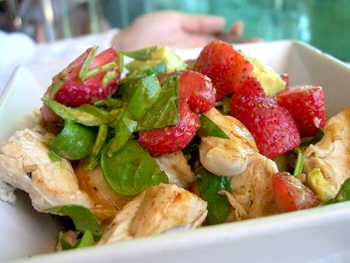New Delhi, Sep 26: It's possible that almost every one in this world has tried one diet or another to lose weight. Some have achieved their desired weight and some are probably still trying.
 We're also sure that many people must have tried taking an unconventional route to lose those extra kilos. Caught you!
We're also sure that many people must have tried taking an unconventional route to lose those extra kilos. Caught you!
Every single person on this planet is different from one another, therefore, it is evident that every body type differs as well.
Trying different things that will suit you and your metabolism, as well as your body mass index (BMI) is natural, but did you know that there are a few absolutely weird diet tricks that people claim work in their favour?
They may sound nothing out of a diet book or a diet chart, but you never know, they might be just what you're looking for.
Check them out!
1. Drinking water before meals:
This is the easiest trick you can adopt, which also has a confirmation by a study published in the journal Obesity. This also has a logical reasoning behind it – the fact that drinking water before meals will satisfy a bit of your hunger so that you take lesser servings, thereby consuming lesser calories. Secondly, it's good for you because doing this also increases one's metabolic rate.
2. Visualize your previous meal:
It's perfectly normal to feel hungry soon after a filling meal, but there are people who give in to tempation very easily and then end up feeling guilty. However, there's a way out. If you've been through this phase more often than not, all you need to do is visualise your previous meal. This will definitely help you and stop you from snacking too much during the course of the day. Probably this is the reason they ask you to just 'think thin'!
3. Colour coordinate your meals:
Although strange, this is a fun way of assuring a low calorie intake. Eat your food in colourful plates and make sure you choose food that is in contrast to your plate colour. This sounds way weird, but a Cornell study found this to be true. For example, if you have two types of Pasta – arabiatta (red sauce) and alfredo (white sauce) – try eating the pasta in red sauce on a white plate and the white sauce pasta on a red plate. There will be a distinct change in the quantity of serving.
4. Smell your food before eating:
Quite laughable, yes, but this definitely works. We not only eat with our eyes, but also with our noses even before we get to eating with our stomachs. A study published in the journal Flavour found that we tend to eat less if the smell is strong. So basically, the fragrance or aroma of food has a big role to play in our satisfaction. Therefore, take in the delicious aroma of your food before sinking your teeth in it and try to sense the ingredients that have been added, like herbs, seasonings, spices, etc. It's okay to let your mouth water.






Comments
Add new comment